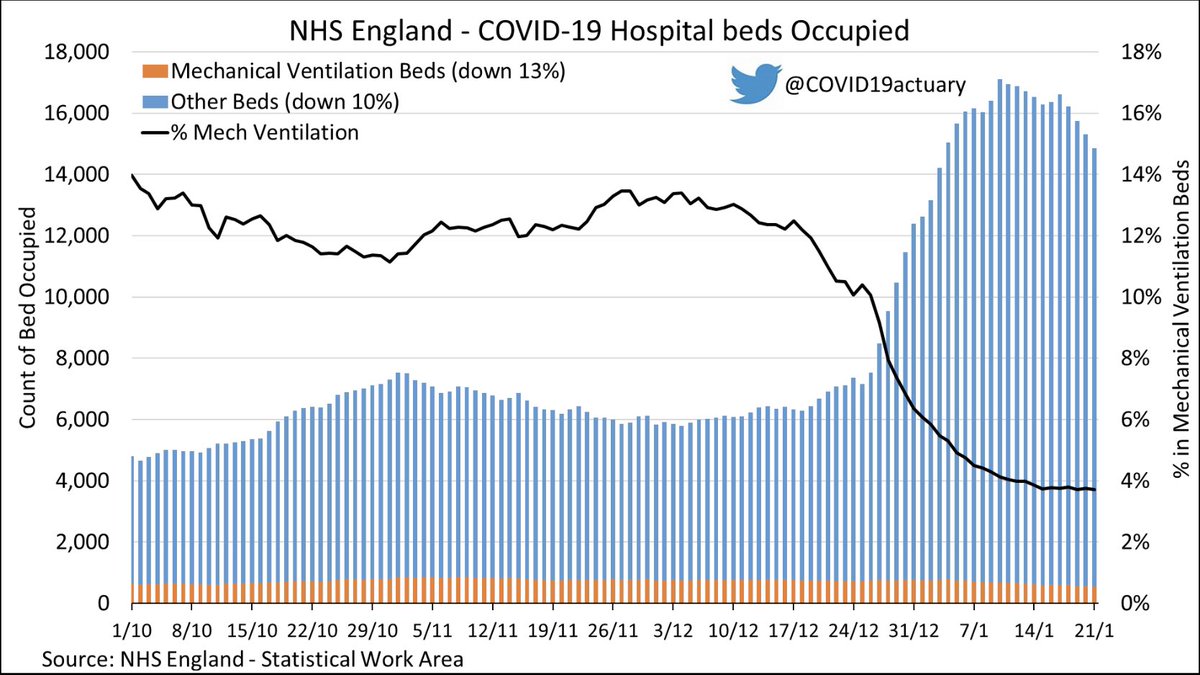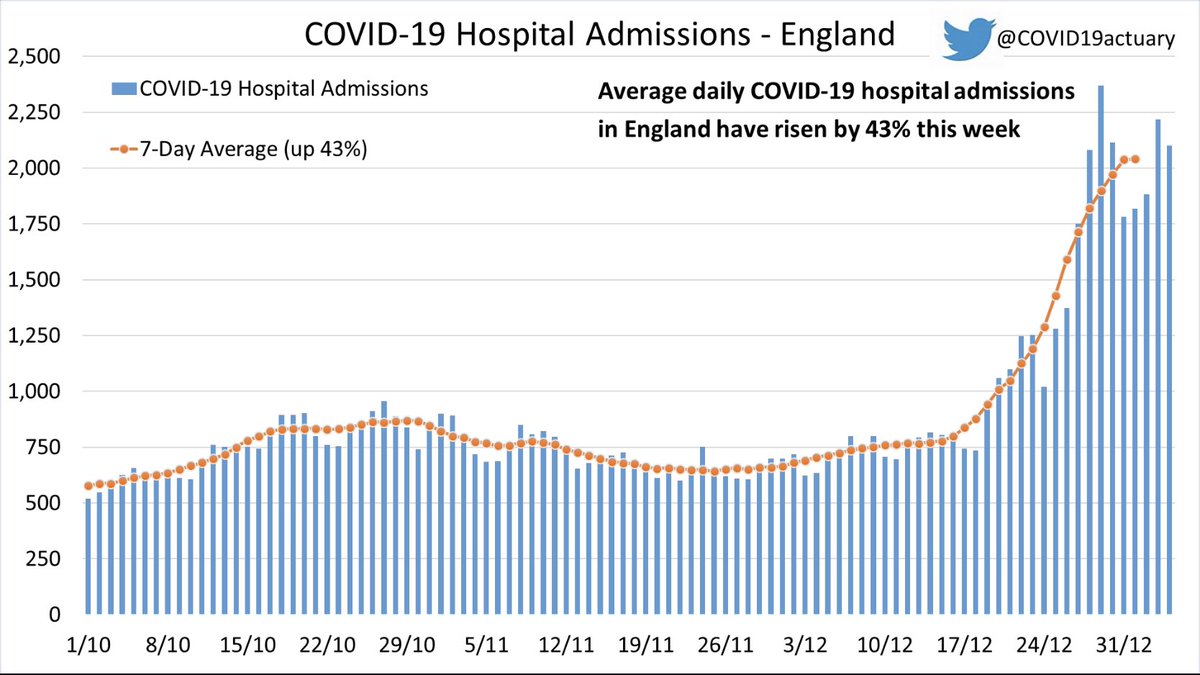
New Friday Report is now available, covering recent developments with Omicron (including the BA.2 variant), vaccines, treatments, modelling and data.
In this edition (thread):
- US cases and hospitalisations by vaccine status and previous diagnosis 🇺🇸
covidactuaries.org/2022/01/22/the…
In this edition (thread):
- US cases and hospitalisations by vaccine status and previous diagnosis 🇺🇸
covidactuaries.org/2022/01/22/the…
Also included:
- Booster progress, socio-economic variation and reasons for hesitancy 🏴
- Omicron outcomes in SA 🇿🇦
- Some rapid tests less effective at detecting Omicron
- Vaccination, infection and fertility
- Vaccinated less likely to get Long COVID
covidactuaries.org/2022/01/22/the…
- Booster progress, socio-economic variation and reasons for hesitancy 🏴
- Omicron outcomes in SA 🇿🇦
- Some rapid tests less effective at detecting Omicron
- Vaccination, infection and fertility
- Vaccinated less likely to get Long COVID
covidactuaries.org/2022/01/22/the…

Also included:
- EAVE II enables large COVID studies 🏴
- Distribution of anti-virals 🇬🇧
- Hospital admissions vs modelling 🏴
- Global excess mortality 🌍
- @ONS infection and antibody studies 🇬🇧
- Primary diagnosis data 🏴
- 2021 death rates 🏴 🏴
covidactuaries.org/2022/01/22/the…
- EAVE II enables large COVID studies 🏴
- Distribution of anti-virals 🇬🇧
- Hospital admissions vs modelling 🏴
- Global excess mortality 🌍
- @ONS infection and antibody studies 🇬🇧
- Primary diagnosis data 🏴
- 2021 death rates 🏴 🏴
covidactuaries.org/2022/01/22/the…

Lastly:
- New variant under investigation BA.2 is descended from Omicron and may be more transmissible still
And finally, @elonmusk’s “interesting” approach to population projections!
Thanks to @john_actuary @AdeleGroyer @longevitymatt @DanRyanCoios.
covidactuaries.org/2022/01/22/the…
- New variant under investigation BA.2 is descended from Omicron and may be more transmissible still
And finally, @elonmusk’s “interesting” approach to population projections!
Thanks to @john_actuary @AdeleGroyer @longevitymatt @DanRyanCoios.
covidactuaries.org/2022/01/22/the…
• • •
Missing some Tweet in this thread? You can try to
force a refresh




















